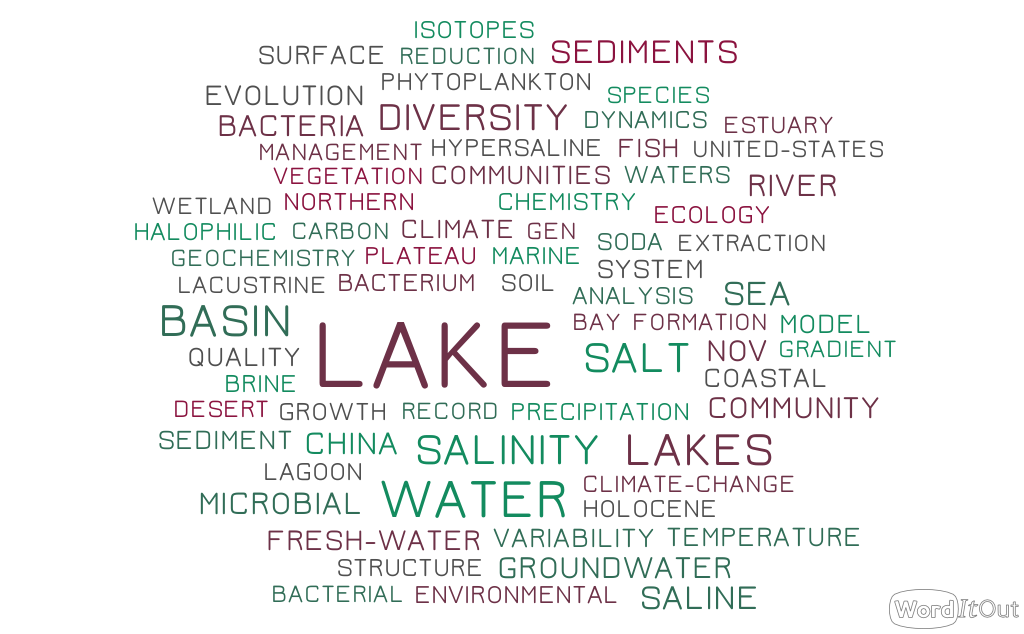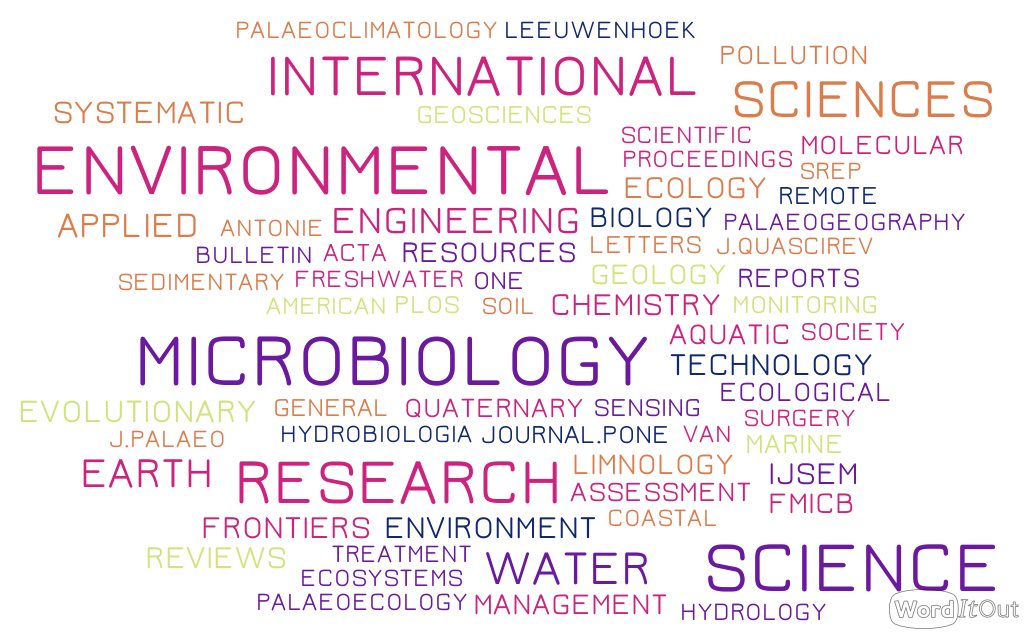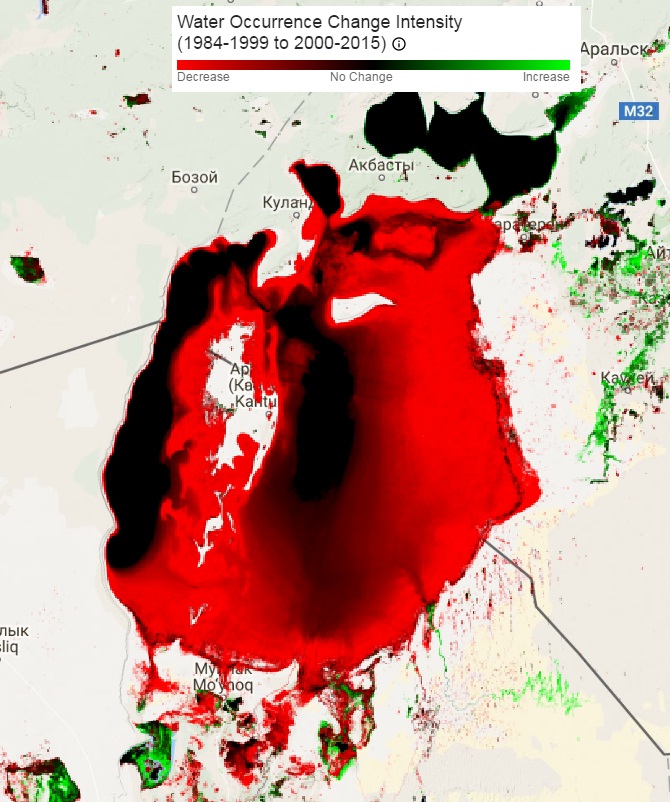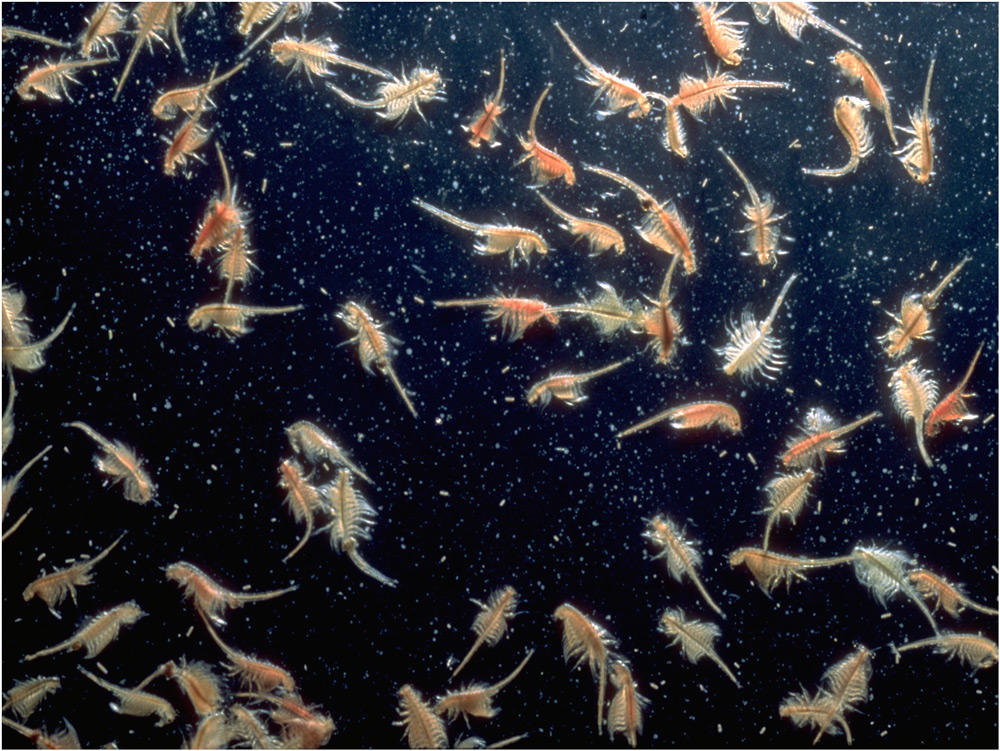We review the results of research on saline lakes based on papers published in Web of Science. Combined search for “saline lake” or “salt lake” or “salinity and lake” provided us with some 700 papers on the topic.
The popular service “word cloud” helps to visualize the most popular topics and journals.
Keywords: 4956 keywords was identified for the list of found papers. 71 words presented in the cloud match the filtering criteria equal to the minimum frequency of 25 mentions.
Journals: 968 words in titles of journals were identified. 66 words presented in the cloud match the filtering criteria equal to the minimum frequency of 8 mentions.
One can make fun trying to invent a title of the paper or a title of the journal that will be most popular in saline lake scientists. For example, paper “Evolution of bacterial quality in salt lakes of northern China under the climate variability” could be published in Journal International Environmental Microbiology. You can propose your own popular title or invent new journal title.
The top papers on saline lake research published in 2016
1. Changes in global surface water over the past 32 years – Global Surface Water Explorer
Using three million Landsat satellite images, Jean-François Pekel with colleagues quantify changes in global surface water over the past 32 years at 30-metre resolution. Between 1984 and 2015 permanent surface water has disappeared from an area of almost 90,000 square kilometres, though new permanent bodies of surface water covering 184,000 square kilometres have formed elsewhere. Over 70 per cent of global net permanent water loss occurred in the Middle East and Central Asia, linked to drought and human actions including river diversion or damming and unregulated withdrawal. This globally consistent, validated data set shows that impacts of climate change and climate oscillations on surface water occurrence can be measured and that evidence can be gathered to show how surface water is altered by human activities. Freely available data will improve the modelling of surface forcing, provide evidence of state and change in wetland ecotones (the transition areas between biomes), and inform water-management decision-making.
2. A geo-statistical model to estimate the volume of global lakes – HydroLAKES
A geo-statistical model to estimate the volume of global lakes with a surface area of at least 10 ha based on the surrounding terrain information was developed by Bernhard Lehner and colleagues. This novel data set aims to be as comprehensive and consistent as possible at a global scale and contains both freshwater and saline lakes. Spatially resolved database shows 1.42 million individual polygons of natural lakes with a total surface area of 2.67 millions square kilometers. (1.8% of global land area), a total shoreline length of 7.2 millions kilometers (about four times longer than the world’s ocean coastline) and a total volume of 181.9 thousands cubic kilometers (0.8% of total global non-frozen terrestrial water stocks). Global distribution of water volume stored in lakes and reservoirs shows that large saline lakes contains almost equal amount of water (44%) to freshwater lakes (48%). There is no distinction between fresh and saline waters for remaining 8% of water in medium and small lakes.
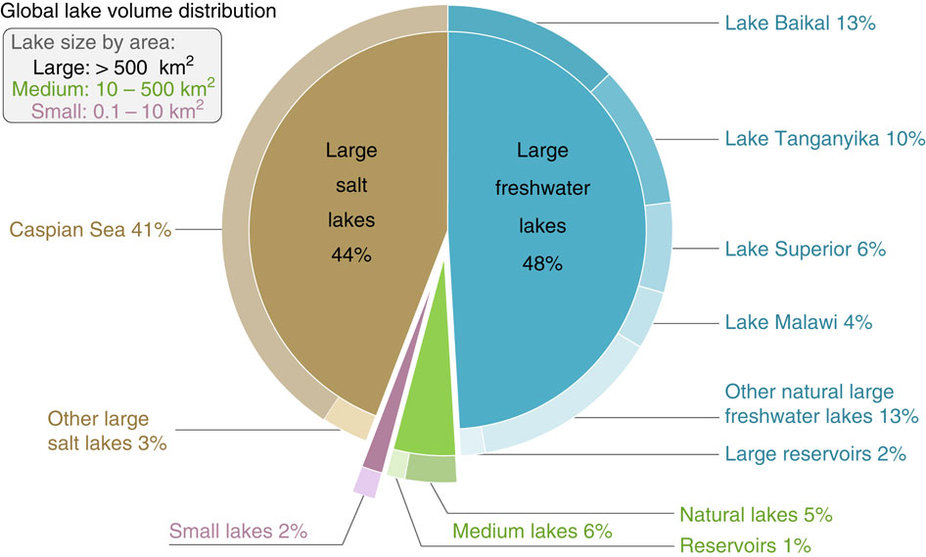
Global distribution of water volume stored in lakes and reservoirs with a surface area of at least 10 ha. From: Nature Communications 7, Article number: 13603 (2016), doi:10.1038/ncomms13603
3. Ancient arsenic bioenergetics in haloarchaea
Nicolás Rascovan with colleagues report the discovery of haloarchaea biofilms inside a volcano crater in Diamante Lake, Argentina at 4589 m above sea level. Biofilms are forming under the extreme environmental conditions such as high salinity, pH and arsenic concentration. Metagenomic analyses revealed a surprisingly high abundance of genes used for arsenite oxidation and respiratory arsenate reduction suggesting that these haloarchaea use arsenic compounds as bioenergetics substrates. Arsenic metabolism is proposed to be an ancient mechanism in microbial life. Several haloarchaea species, not only from this study, have all genes required for these bioenergetic processes. Analyses of Diamante haloarchaea biofilms add novel support to the current hypothesis that arsenic metabolism is one of the main plausible metabolic strategies to meet the energetic demands of microbial mats of the Archaean era.
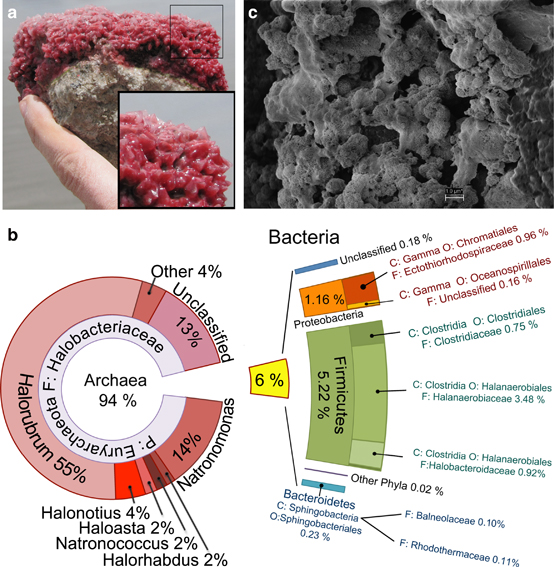
Biofilms from volcano crater in Diamante Lake and metagenomic analysis. Figure from The ISME Journal 10, 299-309 (February 2016), doi:10.1038/ismej.2015.109
4. Anaerobic conversion of organic acids and alcohols to methane at extremely haloalkaline conditions
Dimitry Sorokin with colleagues present results of a microbiological investigation of anaerobic conversion of organic acids and alcohols at methanogenic conditions by syntrophic associations enriched from hypersaline soda lakes in Central Asia (Altai, Russia). Despite very slow growth, the results indicated the presence of a functionally competent syntrophic community in hypersaline soda lakes, capable of efficient oxidation of fermentation products to methane at extremely haloalkaline conditions.
5. Salinity shapes microbial life in surface sediments of the Tibetan lakes
Jian Yang with colleagues found that total microbial community in the surface sediments of nine lakes on the Qinghai-Tibetan Plateau was significantly correlated with lake salinity instead of geographic distance. This suggests that lake salinity is more important than geographic distance in shaping the microbial diversity and community structure in the studied samples. In addition, the abundant and rare taxa were significantly correlated with salinity, suggesting rare taxa might be more sensitive to salinity than their abundant counterparts, thus cautions should be taken in future when evaluating microbial response (abundant vs. rare sub-communities) to environmental conditions.
6. Selective harvesting causes evolutionary responses in brine shrimp in Great Salt Lake
Brine shrimp (Artemia franciscana) cysts in Great Salt Lake (GSL), Utah, USA are commercially harvested with techniques that select against floating cysts. Using cysts harvested from 1991-2011, Shayna Sura and Gary Belovsky found cyst buoyancy decreased and nauplii mortality increased over time. The selective harvesting pressure against floating cysts is a better predictor of changes in cyst buoyancy and nauplii mortality over time than trends in environmental conditions.
7. Bacterial dormancy is more prevalent in freshwater than hypersaline lakes
Bacteria employ a diverse array of strategies to survive under extreme environmental conditions but maintaining these adaptations comes at an energetic cost. If energy reserves drop too low, extremophiles may enter a dormant state to persist. Zachary Aanderud with colleagues estimated bacterial dormancy and identified the environmental variables influencing activity proxy in 10 hypersaline and freshwater lakes across the Western United States. The proportion of the community exhibiting dormancy was 16% lower in hypersaline than freshwater lakes. Saltier conditions in both freshwater and hypersaline lakes increased activity, suggesting that salinity was a robust environmental filter structuring bacterial activity in lake ecosystems. Results demonstrate that extremophiles may need dormancy less often to thrive and survive.
8. Lessons from desiccation of Lake Abert, U.S.A.
Johnnie Moore constructed a 65-year time series of lake area from Landsat images and transformed to lake volume and salinity. Under natural conditions the lake would have higher volume and lower salinities because annual water withdrawals account for one-third of mean lake volume. Change in climate alone would not produce the recent low lake volumes and high salinities that have destroyed the brine shrimp and alkali fly populations and depleted shorebird use at Lake Abert. Large scale withdrawal of water for direct human use has drastically increased the imbalance between natural runoff and evaporation during periods of drought in saline lakes worldwide but could be offset by establishing an “environmental water budget” to lay a foundation for the conservation of saline lake habitats under continued threats from development and climate change.
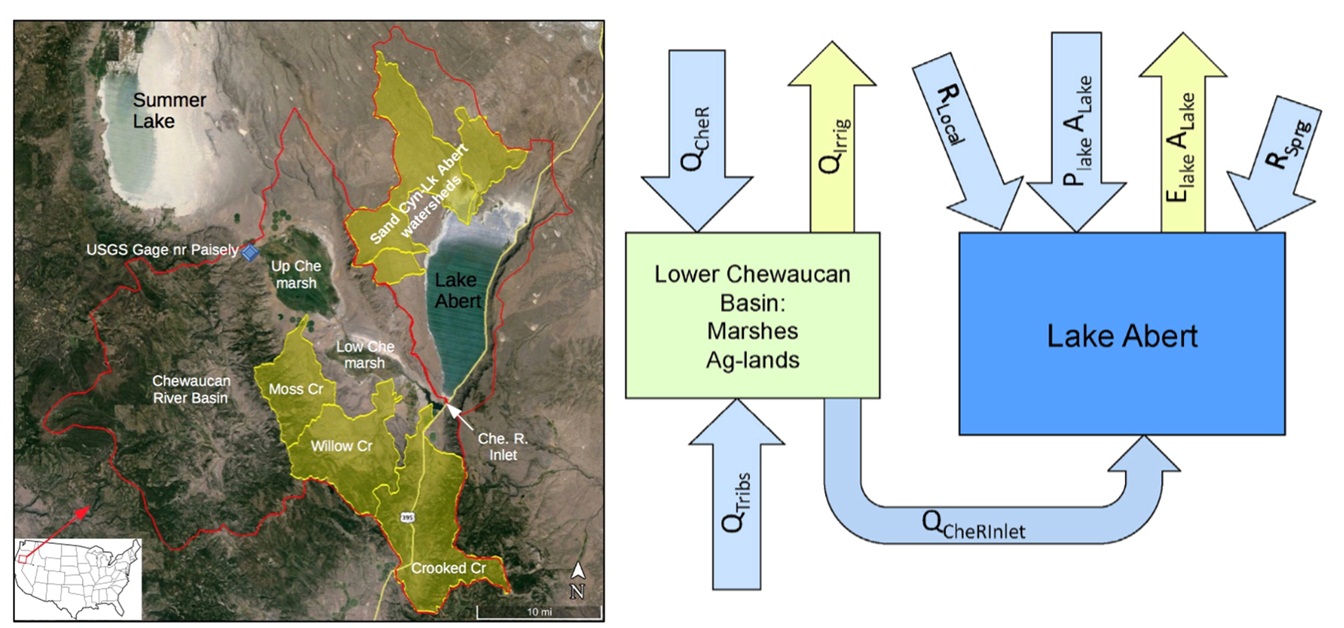
Location map of the lake and schematic of water balance for lake Abert. Source: Science of The Total Environment, 554–555, 2016, 142–154
9. Evolutionary history of tiger beetles from Australian salt lakes
Alejandro López-López with colleagues use various species delimitation algorithms to detect a high number of cryptic and undescribed taxa in a group of nocturnal tiger beetles found in remote Australian salt lakes. Analyses show that the divergence dates of the clades, between 10 and 5 million years ago, correspond to the period in which Australia was undergoing an aridification process that probably isolated the ancestral nocturnal tiger beetles populations to individual lakes or palaeodrainage basins. This implies an important role of the isolation, produced by the aridification of Australia, in the speciation and divergence of nocturnal tiger beetles, which underwent a remarkable radiation as the populations became geographically restricted.
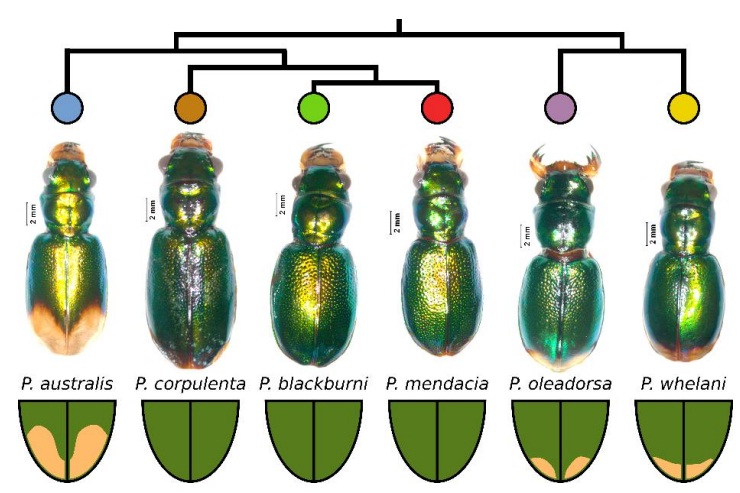
External morphology of samples showing the phylogenetic relationships among tiger beetles. Source: Molecular Phylogenetics and Evolution, 101, 2016, 279–285
10. Rapid shrinkage of Lake Urmia
O. Alizadeh-Choobari with colleagues investigated the effect of climate change and anthropohenic impacts on the rapid shrinkage of Lake Urmia using long-term surface meteorological records of weather stations and data on the number of constructed dams and expansion of irrigated areas in the Urmia Basin. The increased air temperature and evaporation, along with the decreased precipitation indicate that Lake Urmia has been experiencing meteorological drought conditions. On the other hand, diversion of water sources for irrigation led to the socioeconomic drought of the region. The meteorological drought, combined by the socioeconomic drought, has contributed to the significant shrinkage of Lake Urmia, started from the mid 1990s water level peak. Under the induced meteorological and, more importantly, socioeconomic drought conditions, substantial improvements in water management practices are required to preserve or partially restore the lake.

